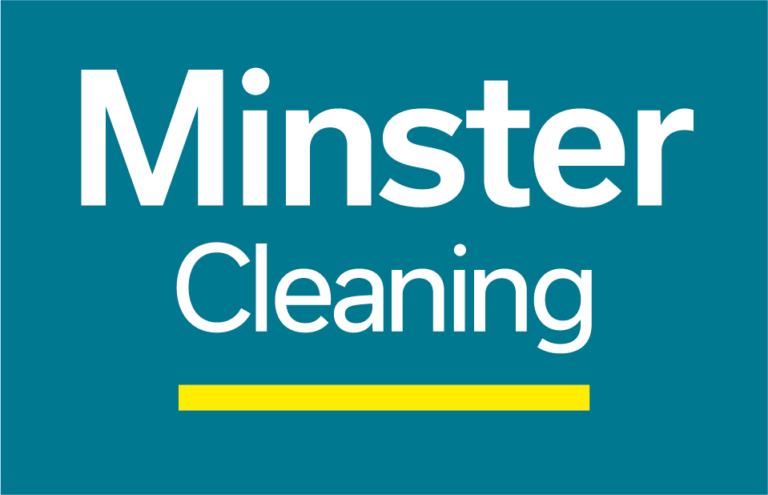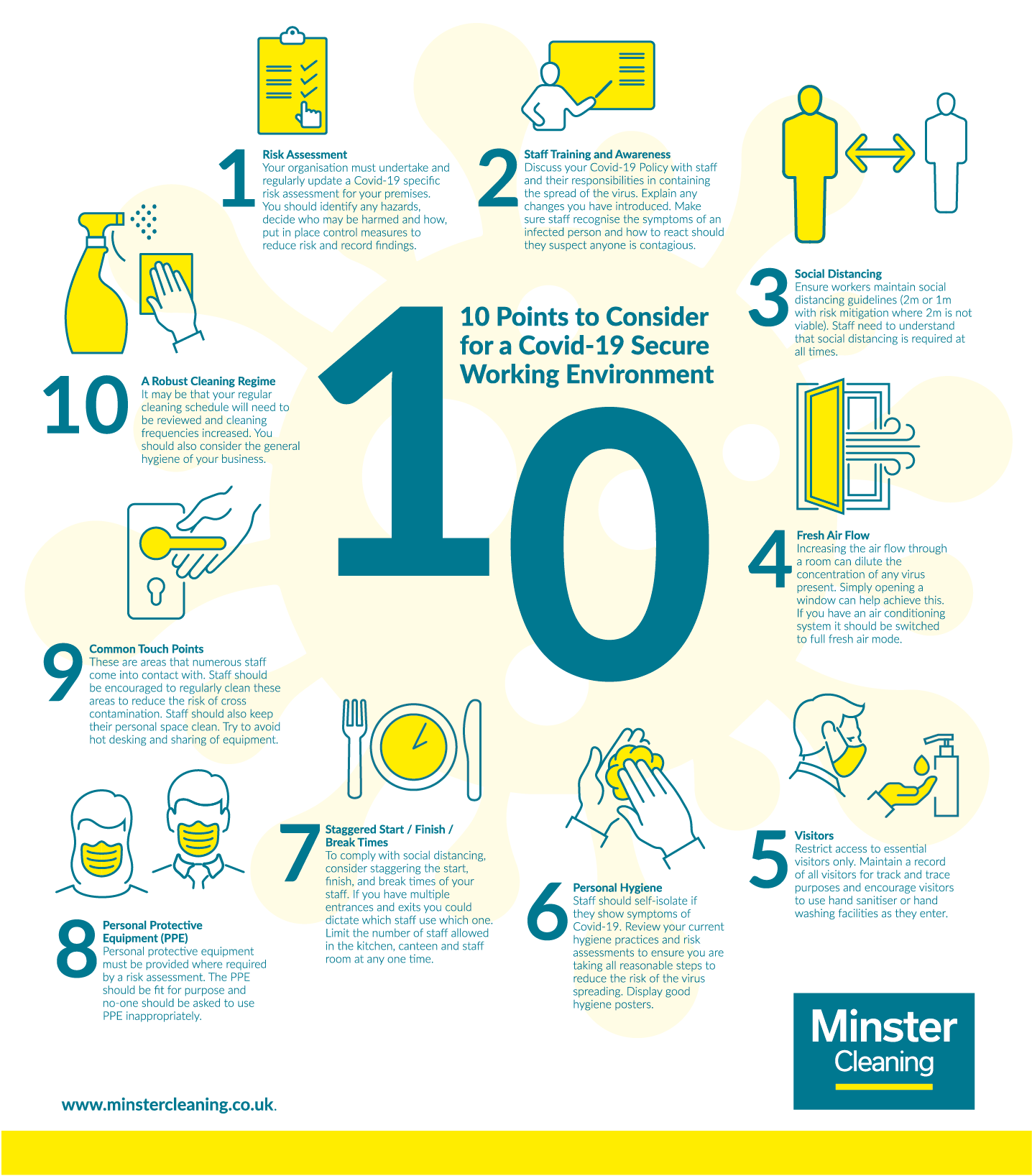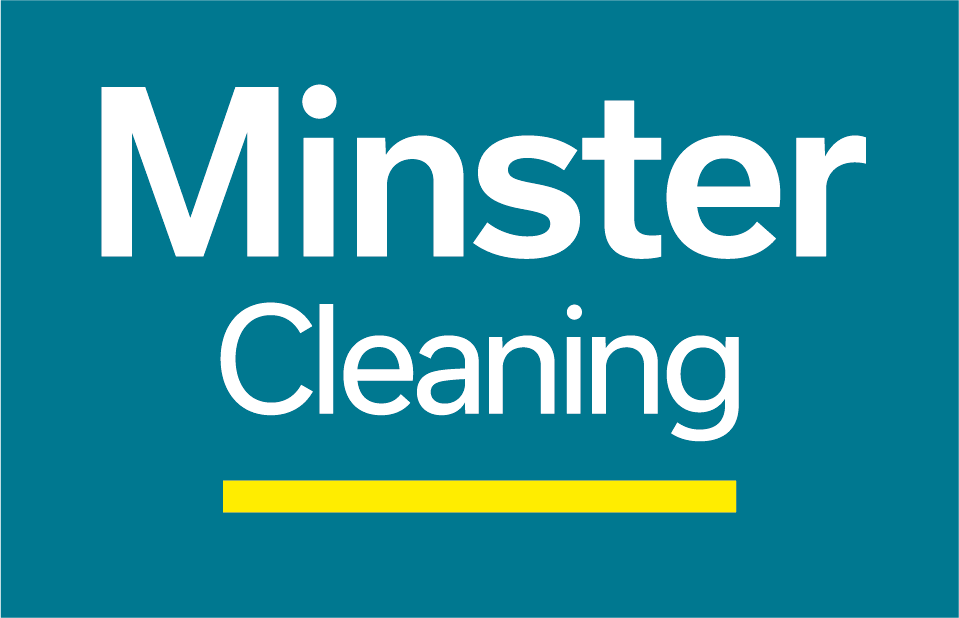It is a legal requirement to ensure your workplace is safe for staff and visitors. Are your premises sufficiently protected to minimise Covid-19 risks to your workforce? Here are 10 key points to consider to help you meet your duty of care to safeguard your employees.
1. Risk Assessment
Your organisation must undertake and regularly update a Covid-19 specific risk assessment for your premises. You should identify any hazards, decide who may be harmed and how, put in place control measures to reduce risk and record findings.
2. Staff Training and Awareness
Discuss your Covid-19 Policy with staff and their responsibilities in containing the spread of the virus. Explain any changes you have introduced. Make sure staff recognise the symptoms of an infected person and how to react should they suspect anyone is contagious.
3. Social Distancing
Ensure workers maintain social distancing guidelines (2m or 1m with risk mitigation where 2m is not viable). Staff need to understand that social distancing is required at all times.
“Without social distancing, one coronavirus sufferer could, in six weeks, have started chains of transmission with 1,093 cases. With social distancing, the chains of transmission [would involve] 127 cases.”
SOURCE: Dr Robin Thompson, a junior research fellow in mathematical epidemiology, Oxford University – https://www.ox.ac.uk/news/science-blog/social-distancing-works-here-s-maths#
4. Fresh Air Flow
Increasing the air flow through a room can dilute the concentration of any virus present. Simply opening a window can help achieve this. If you have an air conditioning system it should be switched to full fresh air mode.
“Ventilation is an important factor in preventing the virus that causes COVID-19 from spreading indoors.”
SOURCE: World Health Organisation – https://www.who.int/news-room/q-a-detail/coronavirus-disease-covid-19-ventilation-and-air-conditioning-in-public-spaces-and-buildings
5. Visitors
Restrict access to essential visitors only. Maintain a record of all visitors for track and trace purposes and encourage visitors to use hand sanitiser or hand washing facilities as they enter.
6. Personal Hygiene
Staff should self-isolate if they show symptoms of Covid-19. Review your current hygiene practices and risk assessments to ensure you are taking all reasonable steps to reduce the risk of the virus spreading. Display good hygiene posters.
7. Staggered Start / Finish / Break Times
To comply with social distancing, consider staggering the start, finish, and break times of your staff. If you have multiple entrances and exits you could dictate which staff use which one. Limit the number of staff allowed in the kitchen, canteen, staff room at any one time.
“Generally, a staggered shift schedule, if implemented correctly, can provide opportunity for staff to continue to work the number of hours that they were originally contracted to work despite receiving increased flexibility during their working.”
SOURCE: Peninsula Business Services Limited – https://www.peninsulagrouplimited.com/guides/staggered-working-hours-covid-19/
8. Personal Protective Equipment (PPE)
Personal protective equipment must be provided where required by a risk assessment. The PPE should be fit for purpose and no-one should be asked to use PPE inappropriately.
9. Common Touch Points
These are areas that numerous staff come into contact with. Staff should be encouraged to regularly clean these areas to reduce the risk of cross contamination. Staff should also keep their personal space clean. Try to avoid hot desking and sharing of equipment.
10. A Robust Cleaning Regime
It may be that your regular cleaning schedule will need to be reviewed and cleaning frequencies increased. You should also consider the general hygiene of your business – use paper towels, make sure your hand washing and sanitising facilities are adequate.
By adopting these practices, you will be taking sensible precautions to help reduce Covid-19 risks in your workplace and inhibit the spread of the virus.
Please click on the image below to enlarge.





